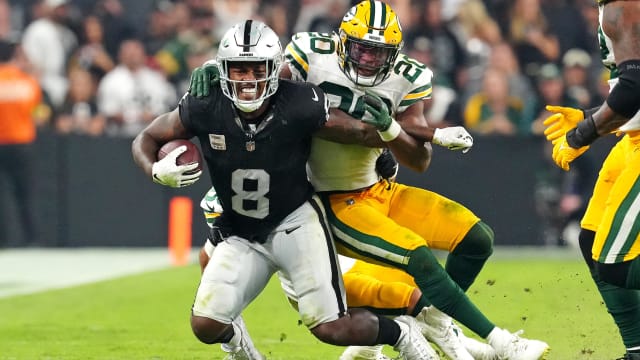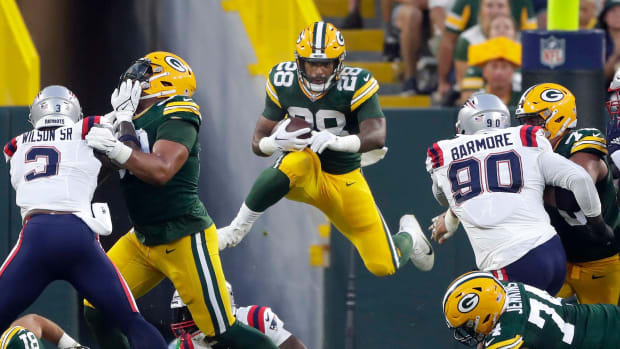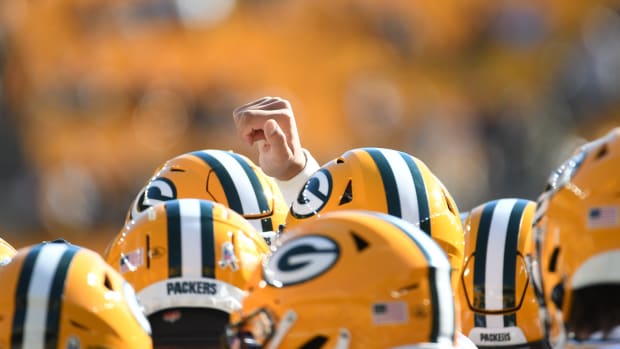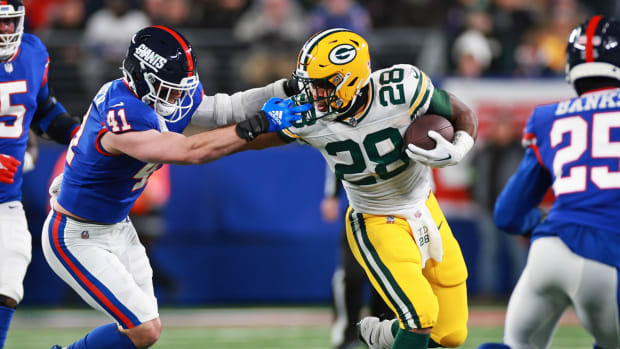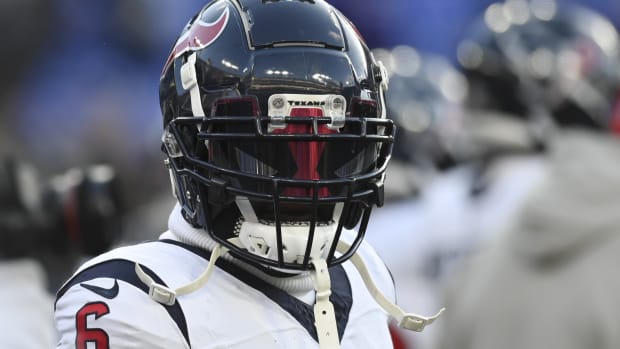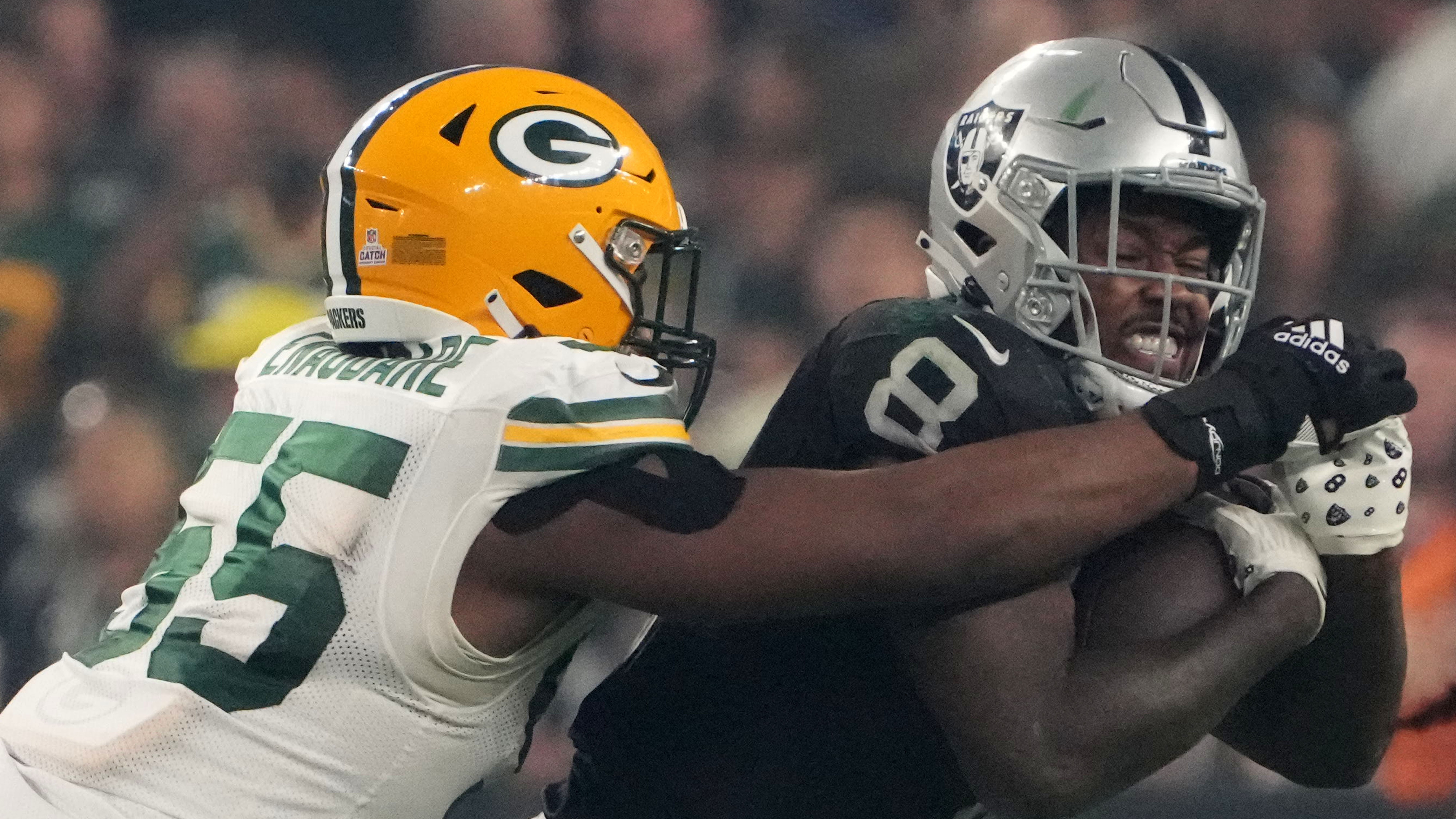
Comparing New Packers RB Josh Jacobs to Aaron Jones
GREEN BAY, Wis. – On Day 1 of NFL free agency, Green Bay Packers general manager Brian Gutekunst signed Josh Jacobs and released Aaron Jones. It was a stunning switching of gears at running back.
“The swap is a bad move, in my opinion,” one top NFL scout said on Wednesday. “I actually think Jones is a clear level better. So, that’s weird.”
From a few perspectives, the move wasn’t “weird” at all. In 2022, Jones rushed for a career-high 1,121 yards. Jacobs, meanwhile, led the NFL with 1,653 yards. Jacobs is almost four years younger – three years and 10 months, to be exact. And with a four-year contract vs. Jones’ expiring contract, Jacobs will lead the backfield for at least the next few years.
On the other hand, several stats from the 2023 season show that Jones, indeed, is a “clear level better” than Jacobs.
Josh Jacobs vs. Aaron Jones as Runner
The simple comparison is Jacobs rushed for 805 yards (3.5 average) and six touchdowns in 13 games while Jones rushed for 656 yards (4.6 average) and two touchdowns in 11 games.
But let’s take a closer look. In 2023, 49 running backs had at least 100 rushing attempts. The comparison via Sports Info Solutions, Pro Football Focus and SportRadar shows a clear advantage to Jones, as the yards-per-carry suggested:
Missed-tackle percentage
Jones: 20th, 15.5 percent. Jacobs: 34th, 12.0 percent.
Yards after contact per carry
Jones: 11th, 3.15. Jacobs: 46th, 2.35.
10-yard runs
Note: Jones had six more than Jacobs while having 90 fewer carries.
Jones: 31st, 15 (while 38th with 143 carries). Jacobs: 41st, nine (while 11th with 233 carries).
Percentage of runs that gained a first down
Jones: 16th, 23.9 percent. Jacobs: 48th, 14.6 percent.
Success rate
Note: A “successful” run gains at least 40 percent of the yards on first down, at least 60 percent of the yards on second down and all the required yards on third or fourth down. That matches the Packers’ win/loss grading system.
Jones: 1st, 62.0 percent. Jacobs: 31st, 45.9 percent
Elusive rating
Note: This is a PFF stat that measures success and impact of a runner with the ball independent of blocking.
Jones: 21st, 58.5. Jacobs: 46th, 32.2.
Compared to backup
Jones averaged 1.2 yards more per carry than AJ Dillon. Jacobs averaged 0.8 yards less per carry than Zamir White.
But What About 2022?
Jacobs, of course, ran away with the 2022 NFL rushing title with 1,653 rushing yards. Using the same advanced stats, he ranked:
- First in missed-tackle percentage (23.2 percent). He forced 90 missed tackles, according to PFF, a number that astonishingly plunged to 28 in 2023.
- Eighth in yards after contact per carry (3.40).
- Second in 10-yard runs (41).
- First in percentage of runs that gained a first down (27.4).
- Second in success rate (57.4 percent).
- Sixth in elusive rating (82.5).
Jacobs vs. Jones as Receiver
The simple comparison is Jacobs caught 37 passes for 296 yards (8.0 average) and zero touchdowns while Jones caught 30 passes for 233 yards (7.8 average) and one touchdown. So, similar numbers.
Digging deeper, 43 running backs were targeted at least 30 times in the passing game. Here’s the comparison from PFF:
Catch percentage
Jones: 35th, 75.0 percent. Jacobs: 39th, 73.3 percent.
Yards per route
Jones: 8th, 1.45. Jacobs, 15th, 1.24.
Drop percentage
Jones: 41st, 16.7 percent (six drops). Jacobs: 37th, 11.9 percent (five drops).
One area where Jacobs has the historic edge is fumbles. For their careers, Jacobs has 53 more touches than Jones and four fewer fumbles (15 to 11).
Jones vs. Jacobs: Potential Playoff Impact
A second scout wasn’t quite as negative about the backfield shakeup. With Jones poised to turn 30 in December and Jacobs set to play out the entire contract before his 30th birthday (unless the Packers reach Super Bowl LXII, which will crown the champion of the 2027 season), age theoretically will be a huge advantage in Jacobs’ favor.
Beyond that, the scout noted Jacobs’ 223-pound build as “a good fit” for late-season games at Lambeau Field. There’s some merit to that statement.
In four career home playoff games, Jones averaged 3.55 yards per carry. That includes 12 carries for 41 yards against the 49ers in the 2021 divisional playoffs, six carries for 27 yards, four receptions for 7 yards and a killer fumble against the Buccaneers in the 2020 NFC Championship Game and 21 carries for 62 yards in a playoff win over the Seahawks in the 2020 divisional playoffs.
Of course, the whole comparison boils down to whether Jacobs can return to vintage form for the Packers and if Jones can dominate in Minnesota like he did down the stretch in 2023.

